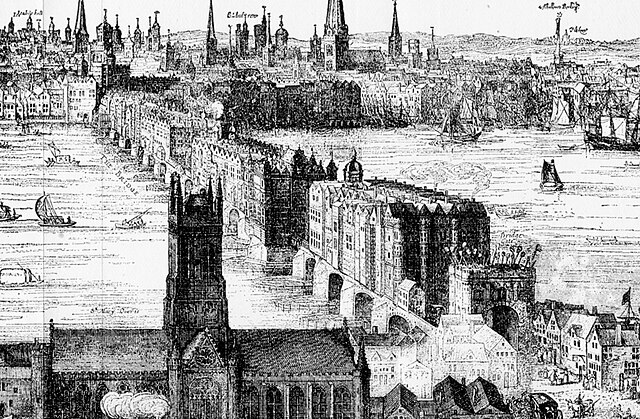
What was the Great Stink? It happened in Central London during June and August 1858, when the smell of the River Thames was unbearable.
The city of London grew up at the point where the River Thames was narrow enough to bridge. There was a ford across the river before the first bridge was ever built. The Romans used London as a convenient place to sail their ships to before they went overland to their capital of England, which was at Colchester (Camulodunum). The Romans moved their capital to London, but the city was pretty much abandoned when the Romans left. The city was left empty for a couple of hundred years before people started to move back in. The city grew when Alfred the Great captured it and it became the capital of England in about 1066. There was no official notice, simply William the Conqueror set up his court there.
For all of its history, London has been served by the River Thames. The Thames is the second longest river in the United Kingdom and it flows 346 km from central England down to the sea in southeastern England. It obviously flows through London. The river was used for transport, for trade, for food, for water, and, as London became larger, for dumping sewage and industrial waste in.
Up until about 1550, the population of London didn’t go over 100,000 people. It started to grow after William the Conqueror moved in because the court was there, but various plagues always served to bring the number of people back down. Then, from about 1550, the British Agricultural Revolution started. A more effective plough was introduced from Europe, crop rotation was discovered, and new crops were introduced from the Americas. This was coupled with new transport infrastructure and new trade systems. More food was produced per farmer than ever before and the population of the UK skyrocketed. This increase in people and the changes in society probably led to the Industrial Revolution, when the population jumped again. Both of these revolutions brought more people into the city of London. By 1650, the population of London was 400,00. It was 600,000 by 1700, and close to a million people by 1800. This rapid increase in the number of people put a huge strain on the city.
We are very used to having underground sewerage systems that take our waste away to out of sight treatment facilities. Before about 1700, this wasn’t an option. Most people tipped their waste into a river and, if there weren’t many people, that wasn’t really a problem. The huge increase in people in London meant that this was a problem. Underground brick sewers were built in London in the 17th century. They were fed by 200,000 cesspits around the city and they flowed into the River Thames. When the Industrial Revolution took hold and factories sprang up, industrial waste was added to the human waste that flowed into the Thames.
As London entered the 19th century, the population pushed past a million and the number of factories kept increasing. The Thames was already becoming a problem. The problem became worse when the flush toilet was introduced in the middle of the 19h century. That introduced more human waste and more water into an already overtaxed system. The Thames was very polluted and people said that you could walk on the surface of the river to get across.
Things got worse and worse until the summer of 1858. That summer was unusually hot. The temperatures that summer reached 36 degrees in the shade and 48 degrees in direct sunlight. The heat caused a drought, which caused the level of the River Thames to fall. That meant the human waste and industrial waste was concentrated and lay on the banks of the Thames. The incredible heat started to ferment all of the waste. The smell got so bad that the government, which was meeting at Parliament, located on the edge of the River Thames, couldn’t do any business. People grew sick and were unable to deal with the smell.
The smell was so bad that the government realized something needed to be done. They gave the job to the Metropolitan Board of Works and allowed them to borrow £3 million (about £350 million today). The money was to be repaid by a tax of 3 pence on every household in London over 40 years.
The Metropolitan Board of Works built a whole new network of sewers that carried all of the waste past the city of London and dumped it into the Thames estuary, so that it flowed out to sea. However, a lot of human waste and industrial waste was released into the Thames. It was too big a problem to solve overnight. Six boats were commissioned to start dredging the Thames of all the waste and they carried on until 1998, 148 years after the Great Stink. It wasn’t until 1976 that all of the sewage that flowed into the Thames had to be treated. The river was cleaned up over the second half of the twenty-first century, but there is still a problem with untreated waste flowing into the river. And, the sewage system for London was only designed with 5 million people in mind. The population today is 10 million and rising. And this is what I learned today.
Image By Angr – This file has been extracted from another file, Public Domain, https://commons.wikimedia.org/w/index.php?curid=832356
Sources
https://en.wikipedia.org/wiki/British_Agricultural_Revolution
https://en.wikipedia.org/wiki/History_of_London#Population
https://en.wikipedia.org/wiki/River_Thames
https://en.wikipedia.org/wiki/History_of_London
https://historicengland.org.uk/images-books/archive/collections/photographs/the-great-stink/
https://en.wikipedia.org/wiki/Great_Stink
